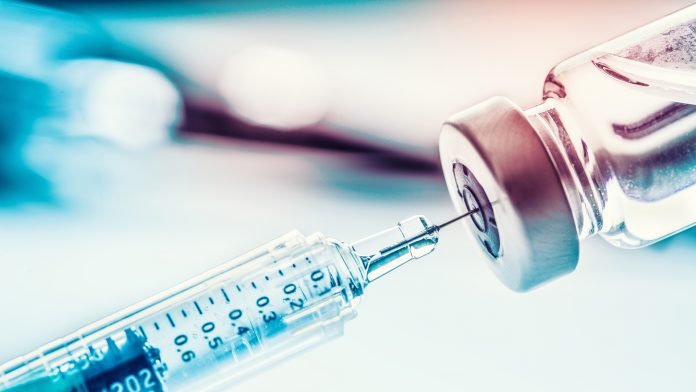
Concerning findings on the Epstein-Barr virus have led to urgency in efforts to develop the first vaccine.
The Epstein-Barr virus usually appears in early childhood and usually causes minimal symptoms. Subsequently, when teenagers or young adults become infected, it can cause infectious mononucleosis, leading to extreme fatigue, fever, sore throat, and swollen lymph nodes.
To combat the effects of the Epstein-Barr virus, scientists at Seattle’s Fred Hutchinson Cancer Center experimented with a nanoparticle vaccine. The minuscule particles are studded with up to 60 copies of a pair of proteins that mimic similar pairs found on the virus surface. These surface proteins, referred to as gH and gL, allow the live virus to enter through the outer membranes of the infected cells.
The findings were published Cell Reports Medicine.
Could blocking gH/gL stop the Epstein-Barr virus?
Dr Andrew McGuire and his team helped discover the importance of the two proteins, gH and gL, in developing a vaccine. Research has demonstrated that antibodies blocking these proteins could stop the Epstein-Barr virus from infecting epithelial cells that line the mouth, nose, and throat; and B cells, which are blood cells that make antibodies. These findings allowed the researchers to design a vaccine.
The vaccine created by the scientists aims to train the immune systems to recognise dummy copies of the gH/gL proteins so that if the body encounters the same shapes on the surface of the real virus, it will trigger antibodies to attack them.
The experimental Epstein-Barr virus vaccine displays the dummy proteins affixed to nanoparticles, either one protein per particle or displayed in arrays of many copies. Dummy displays stimulate the production of antibodies that lock to the real gH/gL proteins on the viral surface.
The antibodies attack the Epstein-Barr virus and disrupt its ability to strike healthy cells.
Testing five versions of proteins
McGuire’s team and graduate student Harman Malhi tested five vaccines on laboratory mice.
Each version of the Epstein-Barr virus vaccine had differing copies of gH/gL proteins displayed by the nanoparticles: one, four, seven, 24, or 60.
McGuire said that all of the multiple-copied nanoparticles performed well, but the best results came from two of them, those carrying four copies and those carrying 60.
Following this, they took serum from mice who received the 60-copy version and tested its protective capabilities on mice with a severe Epstein-Barr virus. The team revealed that 100% of the mice given antibodies generated from the 60-copy vaccine survived, whereas 75% of mice given the single-copy and placebo vaccine died.
“I would say that’s pretty significant,” McGuire said of the outcome. “I was kind of surprised, to be honest, and I was encouraged.”
Four and 60-copy vaccines performed best. Both differed from the other vaccines due to their nanoparticle ’scaffold‘ used to carry and display the dummy proteins being “computationally designed.” The scaffolds are protein structures; artificially constructed by a computer for efficiency. The artificial protein carriers outperformed their natural competition.
McGuire stressed that these laboratory studies are early steps in the vaccine development process. The tests conducted in mice, while providing valuable insights into how the immune response can be triggered against the Epstein-Barr virus, may have little bearing on how the vaccines would work in humans.
His group is carrying out additional preclinical trials to see if the approach tested in this trial remains promising and likely safe enough to try in humans.








